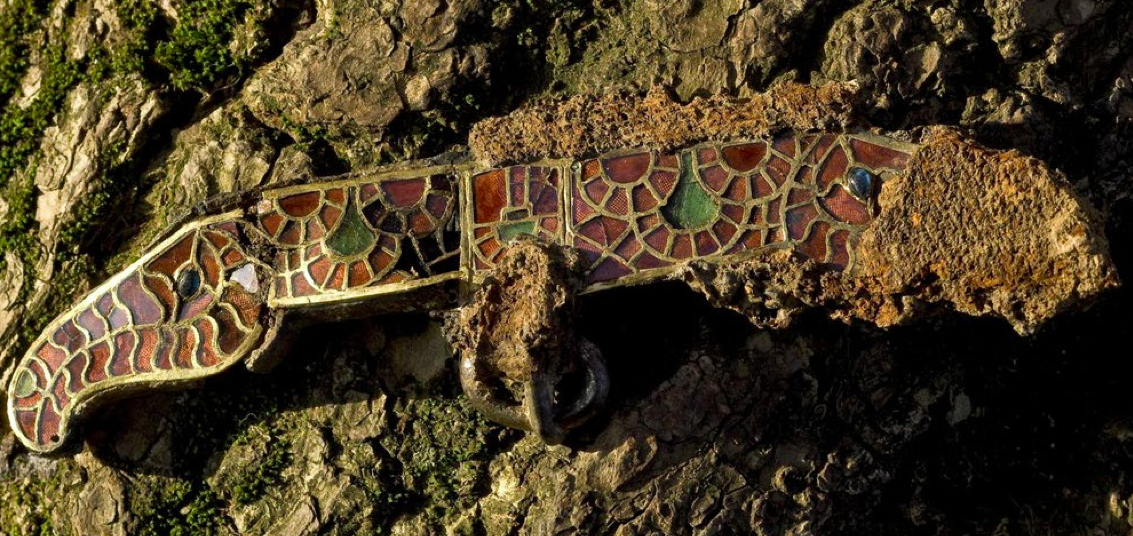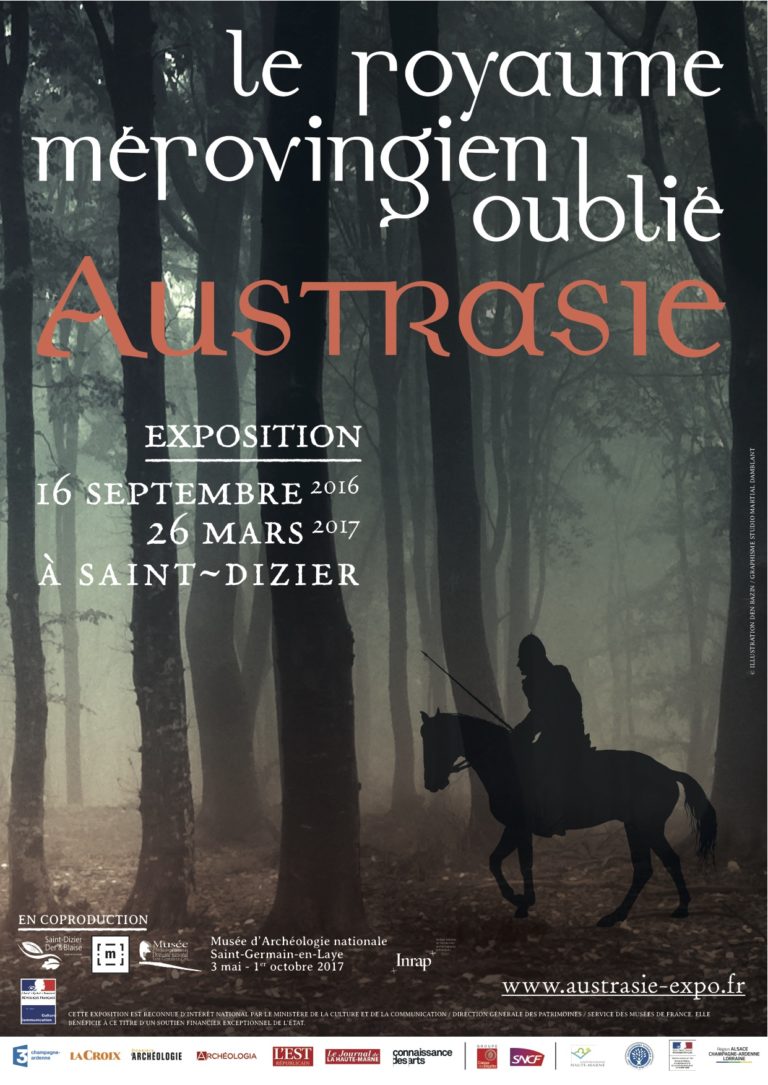
Long before the France, Luxembourg, Belgium and Germany we know today, there was Austrasia. A huge kingdom, about which many questions remain, but which allows us to better understand the historical, cultural and linguistic links between these different countries. At a time when the regions are merging, when some consider the disappearance of the departments as a loss of identity and when Eastern France is turning more and more towards its neighbours, particularly Germany, the exhibition that has just been installed in the town of Saint-Dizier lifts the veil on a rich and yet unknown past.
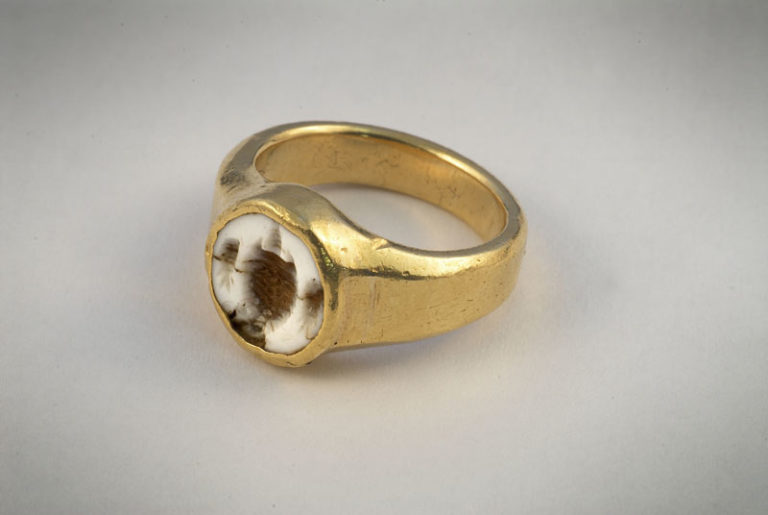
Gold and carnelian ring known as “Saint-Arnoul”, circa 614-626. Photo: © Gérard Coing, DRAC Lorraine, conservation régionale des monuments historiques
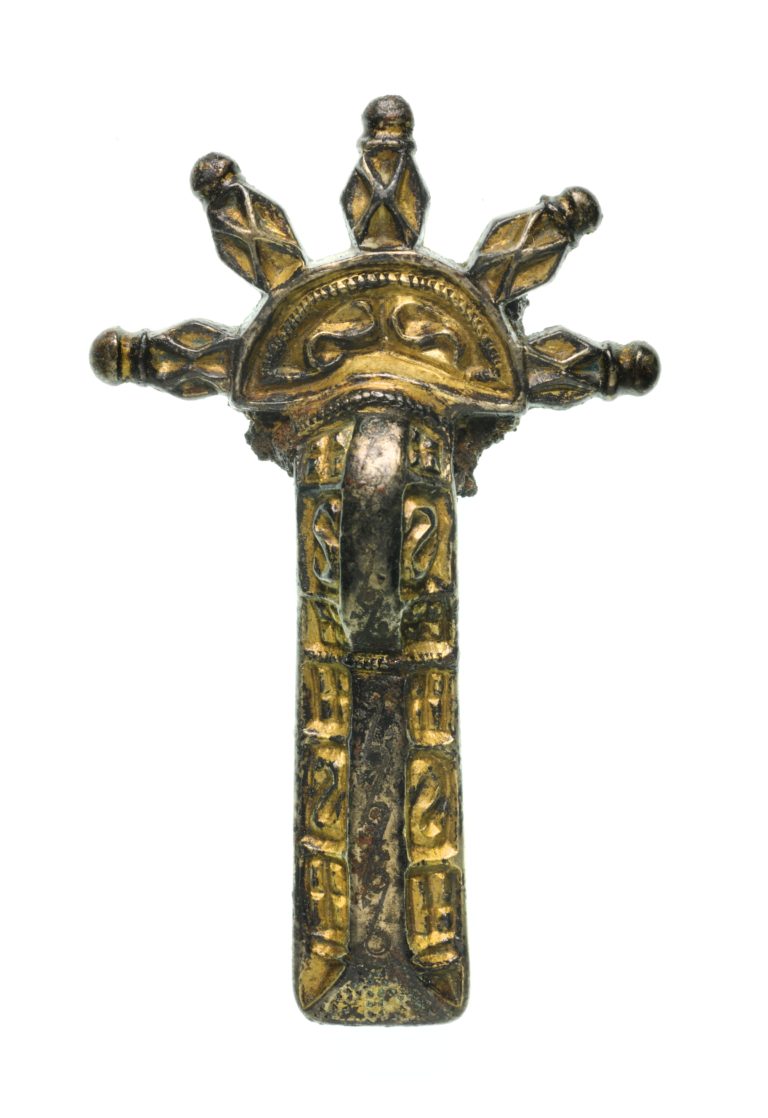
One of the gilded silver fibulae discovered in the Niedernai tomb in Alsace. Photo: © Strasbourg, Archaeological Museum. Photo Musées de Strasbourg, M. Bertola
For the first time, a large number of objects from the museums of Cologne and Stuttgart (Germany), Amay and Brussels (Belgium) and the Musée d’art et d’histoire du Luxembourg are brought together and exhibited, along with remarkable pieces from recent excavations carried out in Lorraine at the sites of Preny and Saint-Dizier. If I am talking to you today about this exhibition, it is because it presents a very large selection of gold or silver jewels that demonstrate the creativity and skill of the craftsmen of this period who worked between the 6th and 7th centuries AD.

Knife with gold handle discovered in the Meuse in 1910, circa 474-491. Photo: © RMN-Grand Palais (Musée d’Archéologie Nationale) / Franck Raux
Austrasia came into being at the beginning of the 6th century, in 511 AD, when – on the death of Clovis – the kingdom was divided between his sons. Successive kings extended the territory before it gradually fell after 717 AD. The exhibition allows visitors to travel and to understand the different power games in place in the kingdom, the functioning of Austrasian civil society, but also to admire numerous examples of objects from daily life, including remarkably well-preserved and restored jewellery and silverware, which bear witness to different lifestyles according to social categories.
Thus, the tomb of “La dame de Grez-Doiceau” discovered in 2002 in Wallonia illustrates the richness of the ornaments in circulation in this kingdom: a pair of gold earrings with braided rings and polyhedral pendants, two gold and copper alloy fibulae, a gold ring, a necklace made up of three small gold and garnet pendants and a necklace made of amber beads. The deceased was further adorned with a headdress decorated with twenty-eight cut and stamped gold leaf appliques. The drawing by B. Clarys illustrates the possible wear of these pieces.
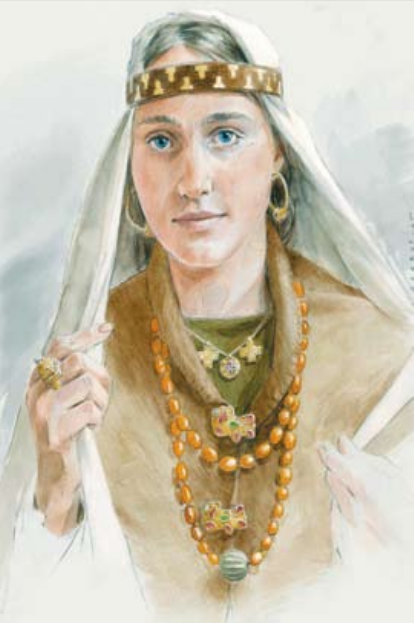
The lady of Grez, drawing by B. Clarys.

The various pieces of jewellery from the excavation of the tomb of the Lady of Grez. Photo: Namur, Direction de l’Archéologie, Ministère de la Région Wallonne (Belgium)
The ring from Saint-Arnoul, like the gold ring discovered in Saint-Dizier during the INRAP excavations of 2002, marks the beginning of numerous discoveries for the town on the Tuileries and Crassées sites. Indeed, this second site reveals the presence of a church, but above all of more than 560 tombs which deliver campaign after campaign treasures of information.
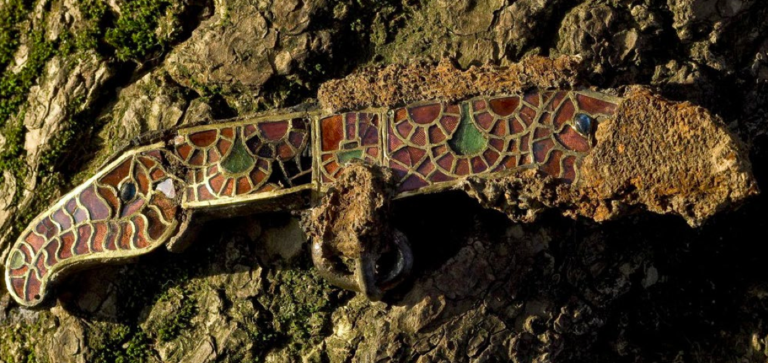
Chaplain’s clasp. Gold, lapis lazuli and garnets. Photo: Saint-Dizier Museum / C. Phillipot
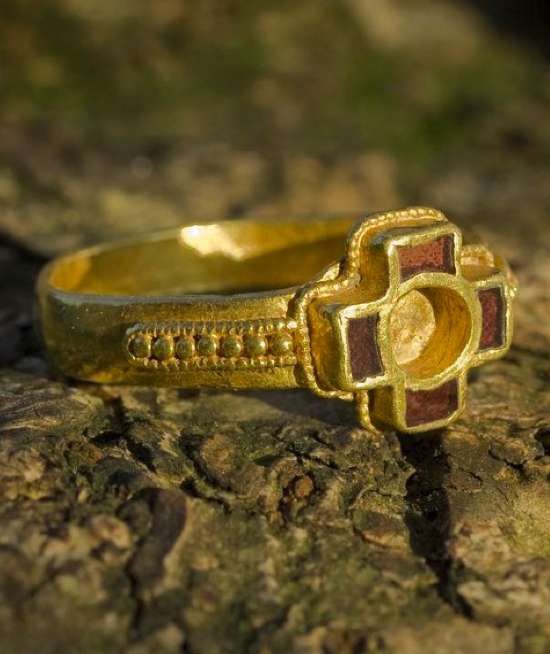
Gold and garnet cruciform ring discovered in 2002 in Saint-Dizier. Photo: Musée de Saint-Dizier / C. Phillipot
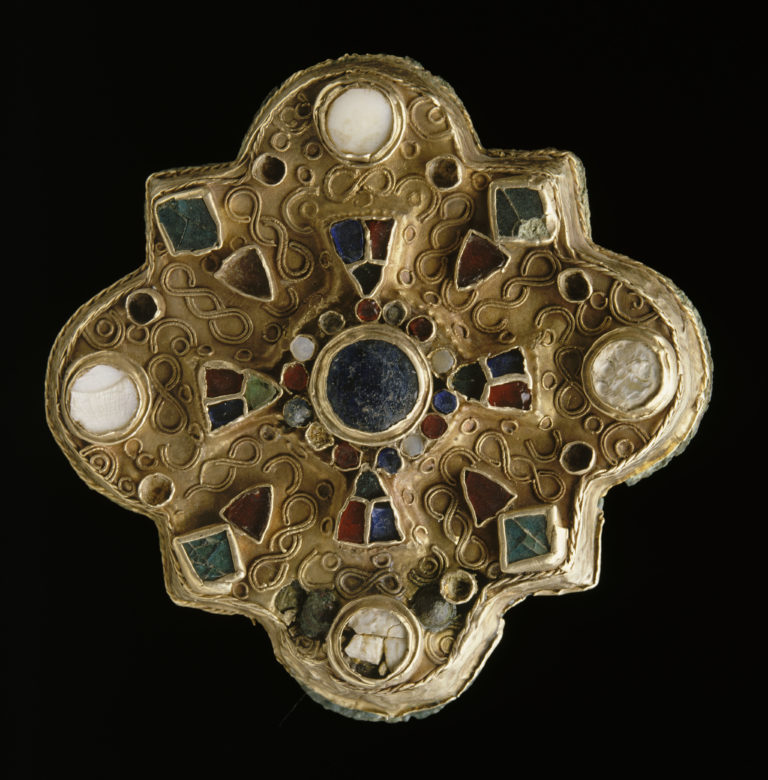
Gold, mother-of-pearl and various gemstones fibula, 7th century, discovered in Humbécourt (Haute-Marne). Photo: © RMN-Grand Palais (Musée d’Archéologie Nationale) / René-Gabriel Ojéda
Finally, for jewellery lovers, the Luc Taillandier company, based in Montbrison, has created a reinterpretation of the cruciform ring discovered in 2002. This is also an opportunity to buy the beautiful and remarkably illustrated catalogue which will cost you 25 € and will allow you to take a little bit of Austrasia with you.
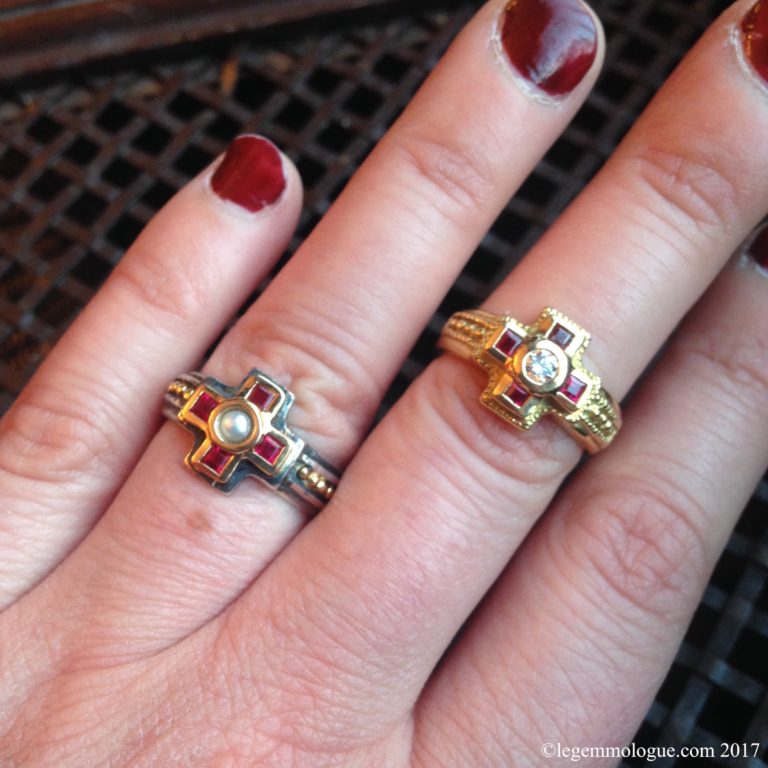
Rings created by the Luc Taillandier workshop. Gold, diamonds, pearl and ruby. Photo: The Gemologist
The exhibition is remarkably well designed and didactic. Its scenography allows a better understanding of the customs and the eventful history of this kingdom. It is free and lasts until 26 March 2017. I can only encourage you to go and discover it and marvel at the pieces on display at the Camille Claudel space.
See you soon!
